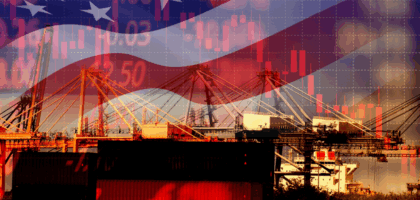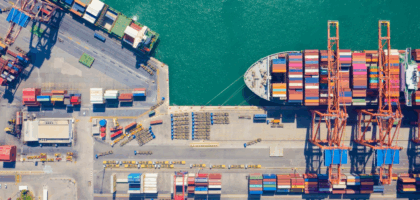As if the logistics and transportation industry hadn’t taken enough punches already this year, in comes intermodal rail issues at full steam.
This past week, both Union Pacific and BNSF—the two largest freight railroad networks in the United States—have taken steps to ease the flow of inbound international traffic into some of their inland intermodal terminals, particularly in Chicago and Memphis.
Last Wednesday, Union Pacific announced they will temporarily halt shipments of international containers from all West Coast ports to its Global IV terminal for up to a week, beginning this past Sunday night. One intermodal analyst said that Union Pacific’s move will create massive backups at West Coast ports, which are already struggling to keep up as retailers are attempting to keep up with consumer demand and restock their inventories.
BNSF Railway is also battling the West Coast demand surge. Throughout various times this year, they have had to limit inbound volume at congested inland terminals. As a way to keep terminals flowing, BNSF has also expanded off-terminal parking and boosted lift capacity by 20%.
What is causing these issues at intermodal terminals?
Well, a lot actually. One of the biggest causes is the rate at which inbound containers are arriving at ports, particularly the backlog that has been created at the busiest port complex in North America—the ports of Los Angeles and Long Beach.
Gene Seroka, executive director of the Port of Los Angeles, stated in a news conference last week that the entire intermodal supply chain is under strain due to trade imbalance and a 100-year surge in consumer buying. “There is no one lever we can pull. There is no one cause that is to blame for the ill of the supply chain on a global basis, much less here in Los Angeles,” Seroka says.
In addition to those factors, other considerations causing intermodal issues include:
- Labor shortages and pandemic-related protocols that have affected the timeliness of container pick up and return by shippers to intermodal terminals;
- Hindered chassis supply and drayage capacity;
- Lack of empty containers for certain export commodities;
- Regional shortages of intermodal (COFC) rail cars;
- Shortage of spaces for parking delayed pickup/returning regional containers; and
- Random mismatch between TEUs (twenty-foot equivalent units), FEUs (forty-foot equivalent units), and the longer 53-foot higher-ceiling domestic containers and necessary chassis equipment.
When will things get back “on track?”
Although there’s no definitive answer to this question, backlogs and congestion throughout all modes will most likely continue through the rest of 2021. In order to return to normalcy, more than one problem will need to be resolved to get intermodal rail back on track. And, with peak season for ocean shipping typically occurring from July through October, things will more than likely continue to get worse for ports, ultimately continuing the bottlenecks occurring at major rail terminals.
We understand the impact these congestion issues are causing, and we are closely watching the development of this situation. We will be sure to provide an update if any major updates occur. If you have any questions or concerns, give us a call! Our team is always here to help you with your logistics needs and challenges.
Resources:
- Is Intermodal Going Off the Rails? (FreightWaves)
- Western Railroads Struggle with Off-Rail Intermodal Supply Chain Problems (Trains.com)
- UP Suspends Inbound International Container Shipments to Chicago for a Week (Trains)
- What’s Really Going On in Memphis? (Railway Age)
- MSC Warns of International Intermodal Impacts on West and East Coasts (FreightWaves)



